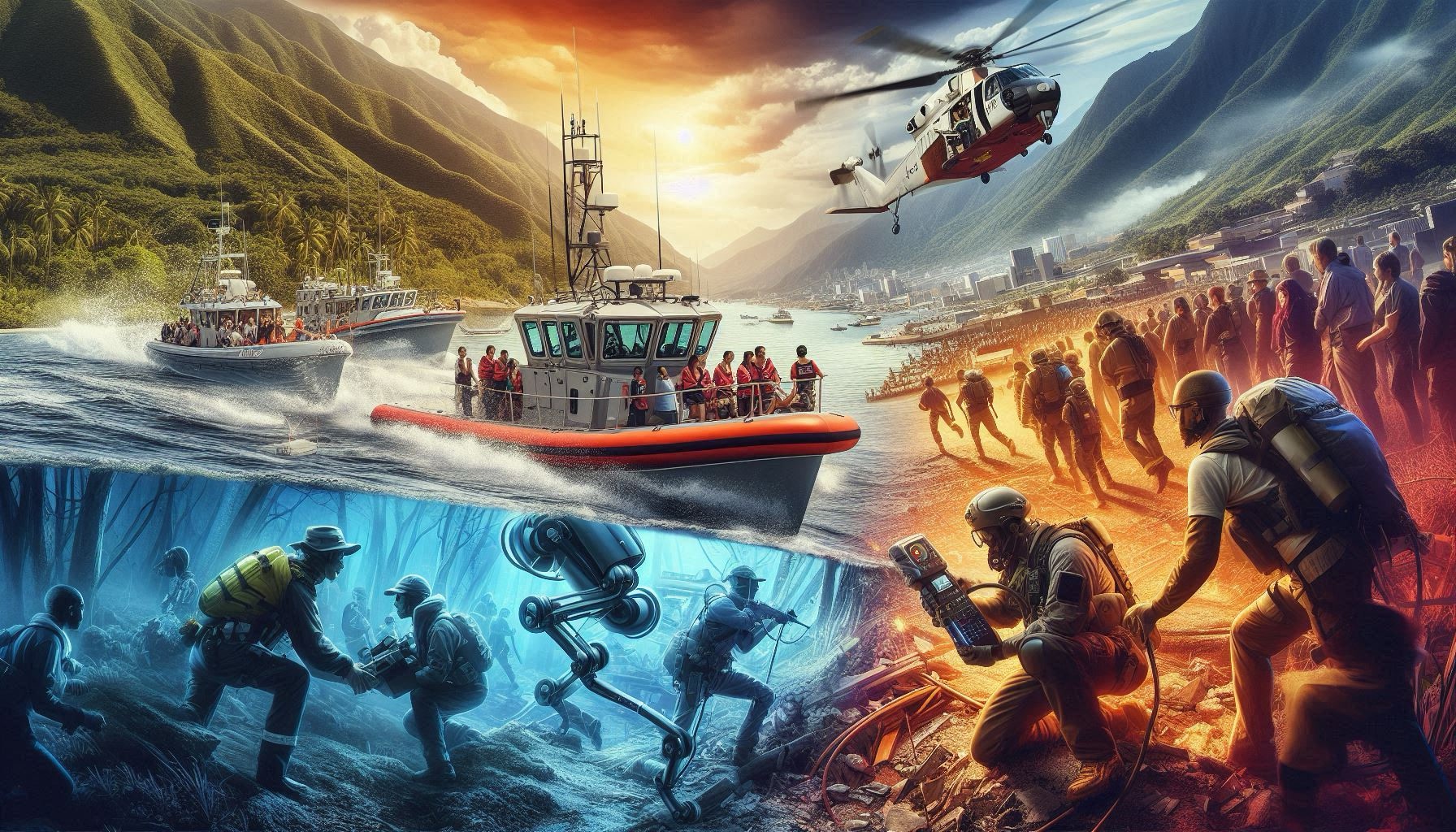Today, April 6, 2025 (4-06-2025) marks a reminder to ensure your emergency equipment is up to standards- specifically any 406 MHz beacons. Being partial to the maritime world as I am, I’d like to note that the Coast Guard is urging mariners to register EPIRB beacons and dispose of outdated models properly. In 2024, 830 alerts were logged in the Mid-Atlantic, with 18 being genuine emergencies.
And with that, here is my first of a planned weekly update in the world of Search and Rescue via SAR Times.
Major World Ops
The most significant ongoing search and rescue operation is taking place in Myanmar following the devastating 7.7 magnitude earthquake that struck on March 28, 2025. As of April 3, the death toll has reached 3,145 with 4,589 injuries and 221 people still missing according to official reports, though local assessments suggest much higher figures of potentially 8,581 total casualties. The earthquake affected six primary regions home to approximately 28 million people.
International rescue teams continue their efforts with 25 urban search-and-rescue teams from 13 countries currently operating in the country. Chinese rescuers have been particularly active, saving nine survivors including a pregnant woman and a child. In Mandalay, they rescued a 52-year-old man who had been trapped for nearly 125 hours.
Notably absent from the international response are U.S. rescue teams, as reported by ABC News. The current administration reportedly canceled thousands of USAID contracts, including those for transporting search-and-rescue crews, leaving the U.S. without quick deployment capabilities when the disaster struck.
Maritime Operations
USCGC Oliver Henry Rescues Mariners in Micronesia
- The USCGC Oliver Henry rescued two mariners stranded near Namoluk Atoll, Federated States of Micronesia, on March 29. The crew located their distressed skiff and safely returned them to shore. The cutter also made history as the first U.S. government vessel to moor at Nauru’s new wharf, strengthening regional maritime partnerships.
Canadian Coast Guard Seasonal Readiness
- Seasonal SAR stations in Quebec (Cap-aux-Meules, Havre-Saint-Pierre, and others) reopened on April 2 for the 2025 boating season. Cold water safety warnings were emphasized.
Land Operations
SPROUT Robot Field Testing
- MIT Lincoln Laboratory’s vine robot, SPROUT, underwent field tests with Massachusetts Task Force 1. This flexible robot maps debris routes in collapsed structures, reducing risks for responders. A larger spring 2025 study is planned. (SPROUT: Soft Pathfinding Robotic Observation Unit)
Technology Advancements
AI and MEOSAR Enhancements
- AI-driven systems like SEA.AI improved overboard detection using thermal imaging, while MEOSAR satellites reduced distress signal detection times to under 5 minutes.
